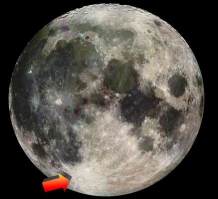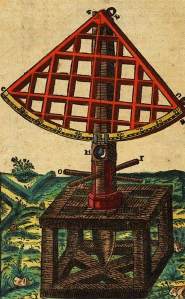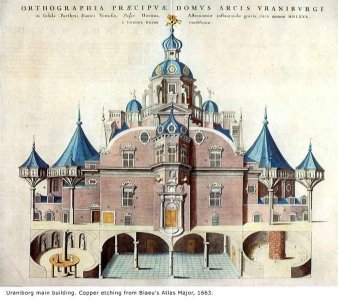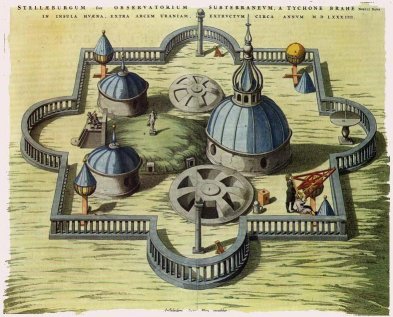Unusual Life Of Tycho Brahe
Table of Contents
One of the Great Astronomers of all times and the largest, most dramatic crater on the moon is named after him.
 There is one crater on the moon that stands out among all the rest. It is a stunningly large and very white crater that has debris from its impact spread over half the moon. This crater, and this is astronomer, are both called Tycho. It is a tradition to name craters on the moon after famous astronomers and this big crater is named after one of our biggest astronomers: Tycho Brahe.
There is one crater on the moon that stands out among all the rest. It is a stunningly large and very white crater that has debris from its impact spread over half the moon. This crater, and this is astronomer, are both called Tycho. It is a tradition to name craters on the moon after famous astronomers and this big crater is named after one of our biggest astronomers: Tycho Brahe.
Tycho Brahe had an enormous impact on astronomy and he did it before the time of the telescope. There were no telescopes in his day. He lived from 1546 to 1601 (14 December 1546 – 24 October 1601), and the first known patent for a telescope was in 1608 although there is some proof that telescopes were around a bit earlier than 1608.
So What was Brahe’s claim to fame?
He is generally considered to be the greatest and most accurate astronomer to make his observations with the unaided eye. He built large astronomical instruments and spent many years observing and recording the positions of the stars and planets. He accurately recorded the positions of 777 of the brightest stars and the motions of the planets.
He recorded all of this in a series of tables called “The Rudolphine Tables” in honor of the king who sponsored his work. He is considered to have done the most accurate and exhausting work with the naked eye. He never completed his work but he did have a famous assistant who followed in his footsteps. That was Johannes Kepler who many years later finished the Rudolphine Tables of Planetary Motion.
How did he make his observations and why were they so accurate?
This was the time before telescopes so you might be wondering exactly what kind of instruments did he build?
 His primary instrument was something called a quadrant. The picture at left is of one of his earlier and smaller quadrants. The yellow band on the instrument with numbers on it is significant. These numbers are how the position of the stars were numbered and an important thing to note is that the larger the instrument the more accurate these numbers can be.
His primary instrument was something called a quadrant. The picture at left is of one of his earlier and smaller quadrants. The yellow band on the instrument with numbers on it is significant. These numbers are how the position of the stars were numbered and an important thing to note is that the larger the instrument the more accurate these numbers can be.
So, Brahe, over the course of his life built some enormous quadrants that were very accurate. The largest of which was as high as a two story house and used massive oak beams as the straight edges of the quadrant. the pillar in the middle was made of a massive oak beam that was encased in iron and held in the ground by stone and mortar.
He actually built observatories which were giant castle-like grounds and in these observatories he used instruments such as the quadrant.
Another claim to fame for him was to be the first discoverer of a Nova or “New” Star. This happened on the night of November 11, 1572 while he was measuring and cataloging the positions of stars. He had many records and star charts from previous astronomers but he stumbled upon a bright star that was not in any of the charts. This new star is located in the constellation Cassiopeia and some astronomers call it Tycho’s star or Tycho’s Supernova. This star was a significant event in Tycho’s life and a significant event in the history of astronomy. It brought into question the static nature of the objects in the sky and the need for better cataloging and measurement of celestial objects. The second of which Tycho excelled at.
What influenced him to become an astronomer?
It is a rather interesting story as to why Tycho started in astronomy. He was a student at the University of Copenhagen with the intent on studying law. In a class on Astronomy he was told that there would be an eclipse of the sun on August 21, 1560. When it did happen on the time and day as predicted Tycho was hooked and he knew that he would have to pursue the study of astronomy.
His observatories
For many years of his life he was in the favors of King Frederick II of Denmark who hired him to be the official Royal Astronomer and bequeathed to him an island and money to build an observatory. This island is Hoene and it is about ten miles from Copenhagen. Tycho build the a magnificent castle observatory which he called Uraniborg (Fortress of the Heavens).

Having the astronomical instruments above ground proved to be difficult because they were susceptible to weather and storms. Wind had an effect on the accuracy of his measurements so he built another smaller observatory which housed much of the instrumentation under ground. This smaller observatory was called Stjerneborg (Castle of the Stars).

Stjerneborg near Uraniborg
It is on the grounds of these observatories that he did most of his work and he lived here for twenty years. This observatory is now a museum that can be visited by the public. You can learn more about it on the website here: TychoBrahe.com
